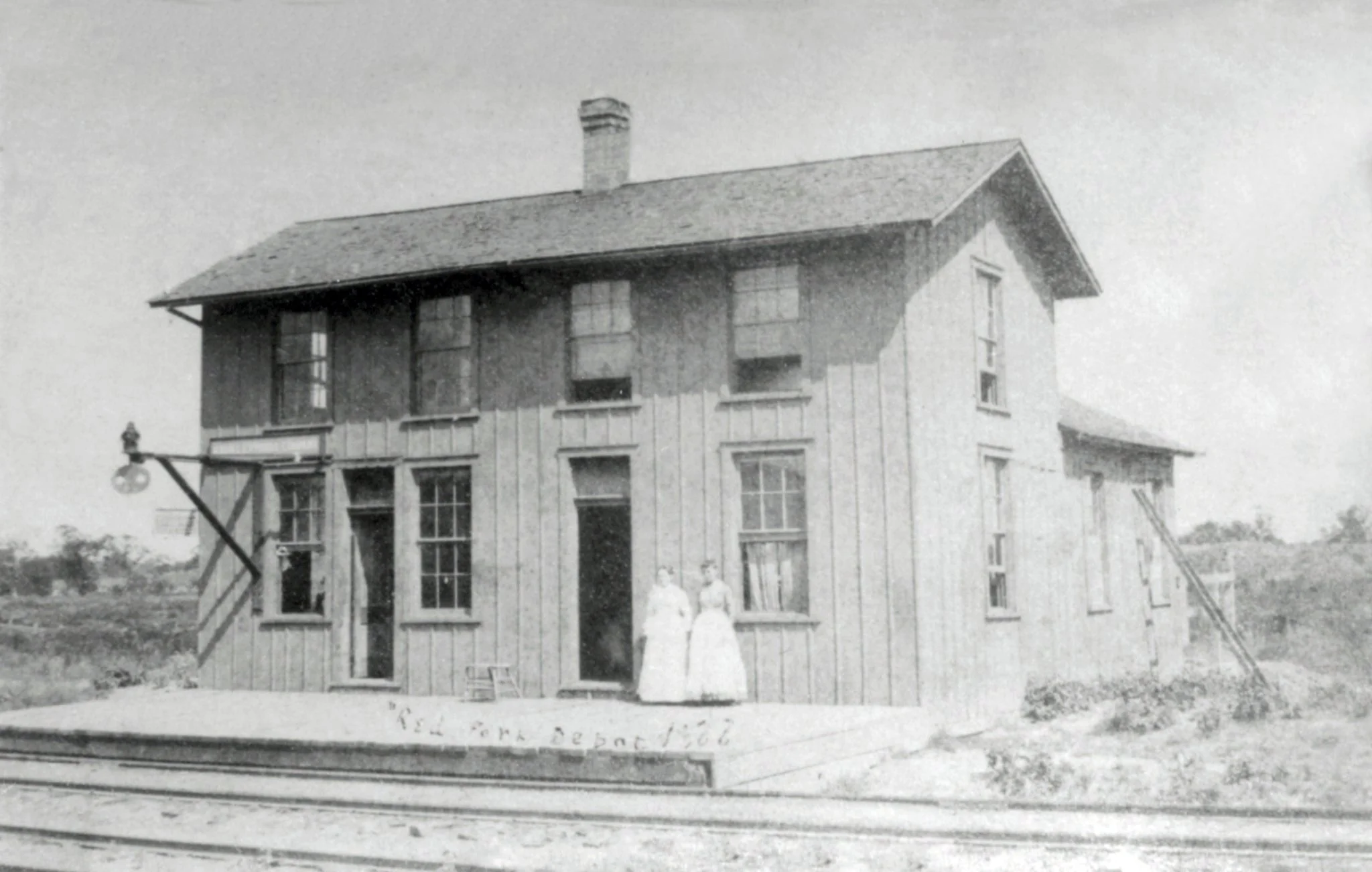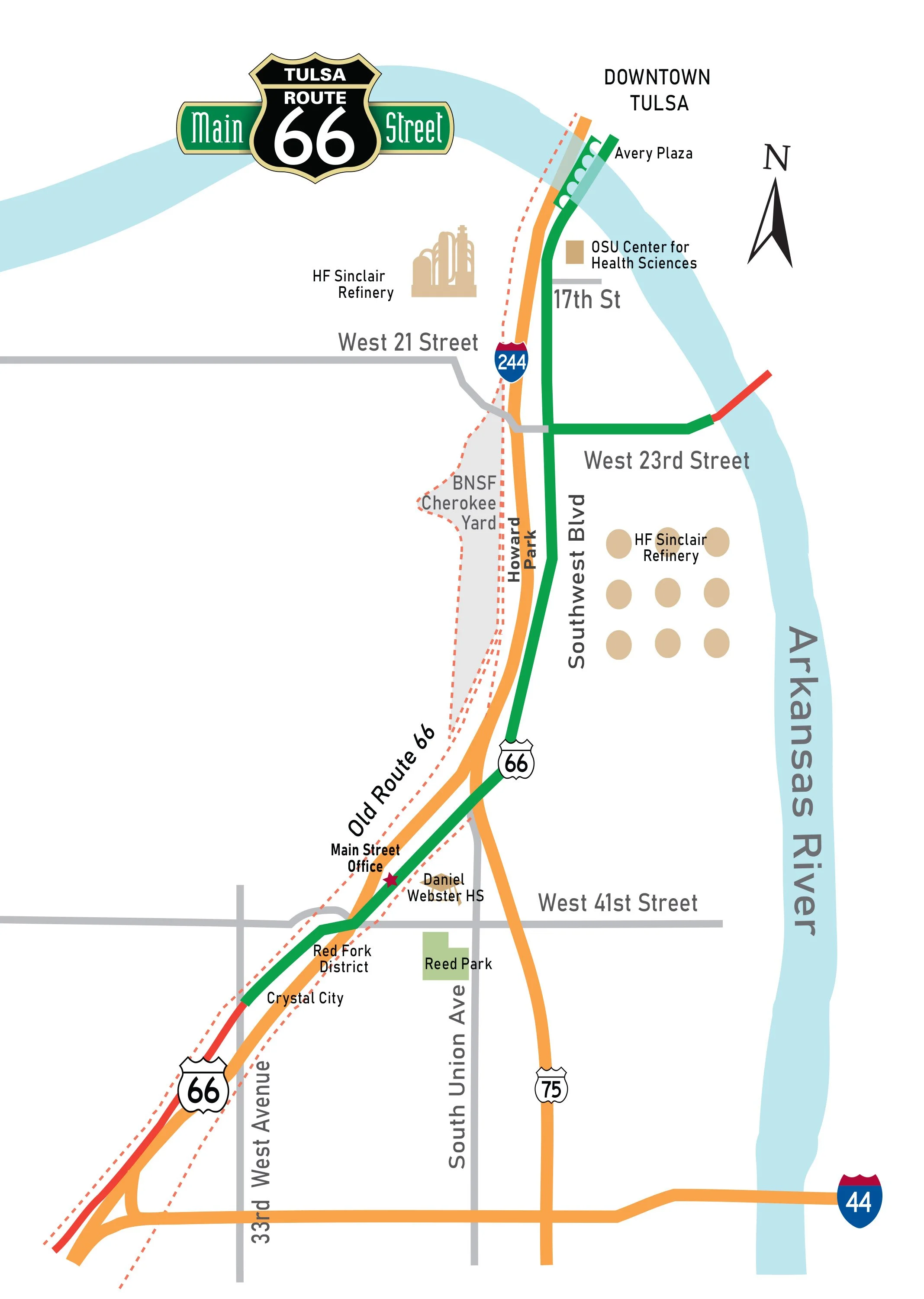History and Culture
Our Main Street Corridor has a rich history that can be traced back further than the early 1880’s when the railhead at Red Fork, OK was established to ship cattle from the Chisholm Trail. This was Indian Territory, and our Main Street office sits on the original Muskogee Creek allotment land where the first oil well in Tulsa County, the Sue A. Bland #1, was discovered on June 24, 1901. The area grew overnight into communities, like West Tulsa, Carbondale, Garden City, South Haven, Berryhill and Oakhurst, that eventually were incorporated into the city of Tulsa.
From these early events, two major west side industries, the Frisco Railroad (Cherokee Yard) and the Refineries, grew providing jobs for Tulsans. As a consequence, Tulsa became known as the “Oil Capital of the World,” with a little help from the west side.
Our unique Main Street Corridor stretches approximately 4 miles from the Cyrus Avery Bridge (the old 11th Street Bridge) along Southwest Blvd to South 33rd West Ave, including 23rd Street
from Jackson Street at the base of the 23rd Street Bridge to Southwest Blvd.
Our Main Street program serves a friendly, close-knit and growing community with a variety of businesses, eateries, and new housing developments.
For more information, contact our Executive Director at director@route66mainstreet.org or 918-445-4457.
Red Fork Depot,
circa, 1883
Red Fork Depot’s original floor plans
Vintage highway sign
Muskogee Creek Allotments






